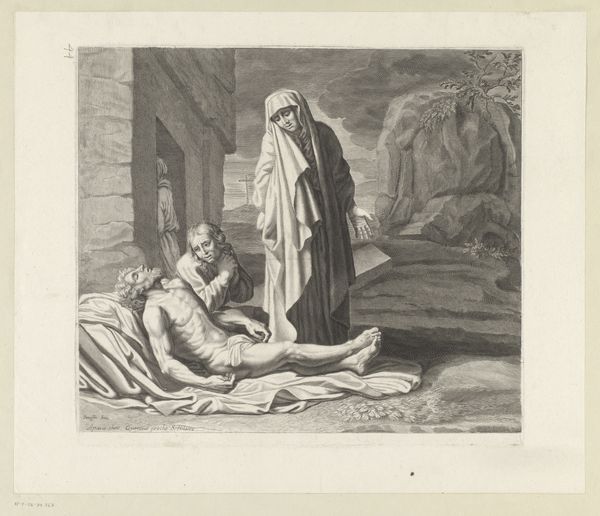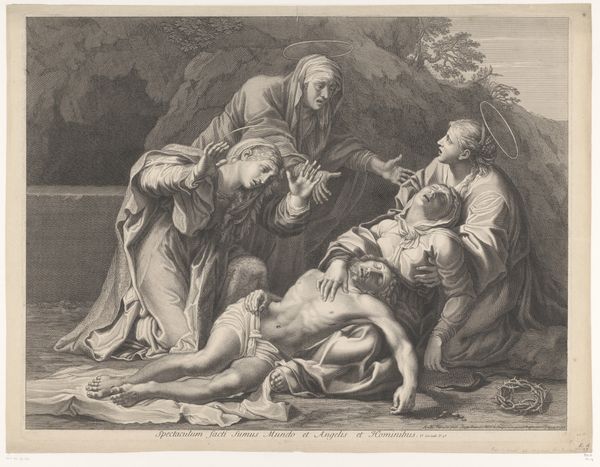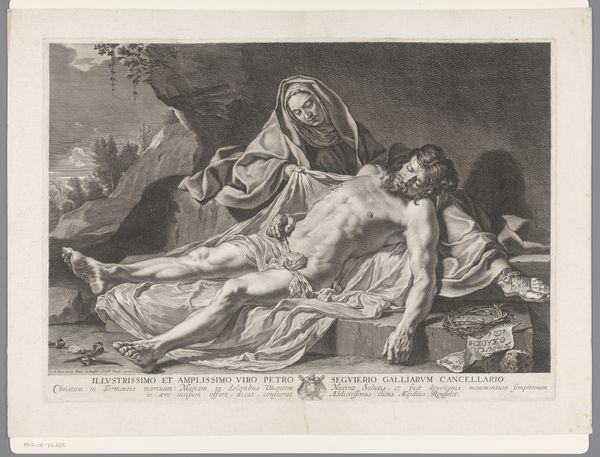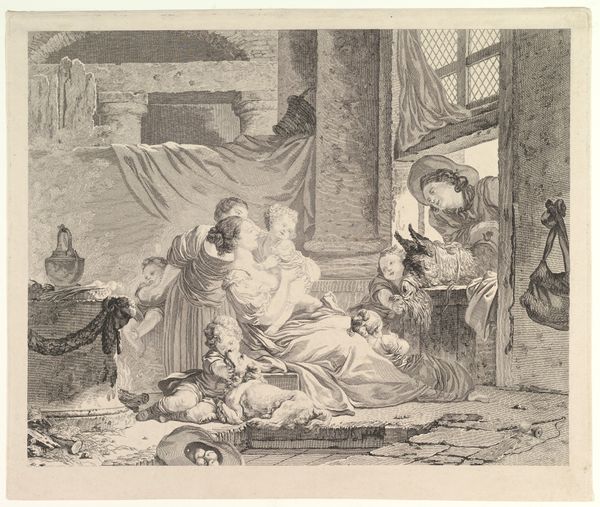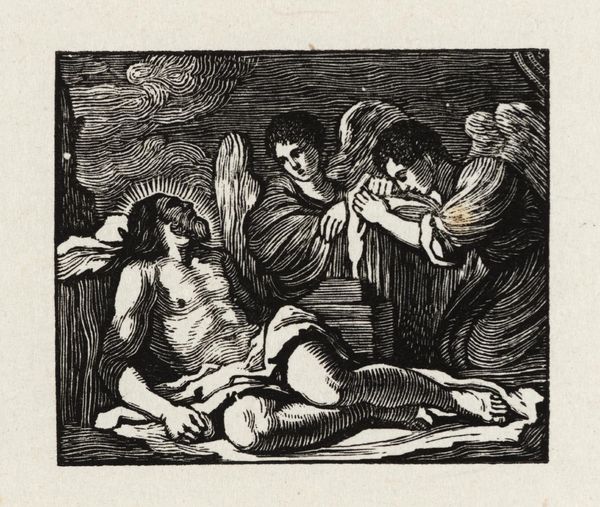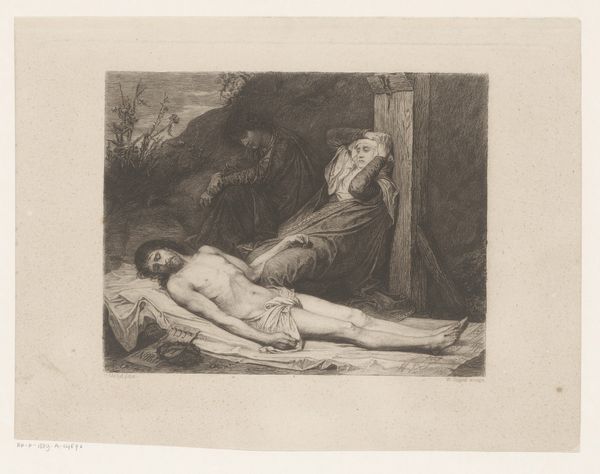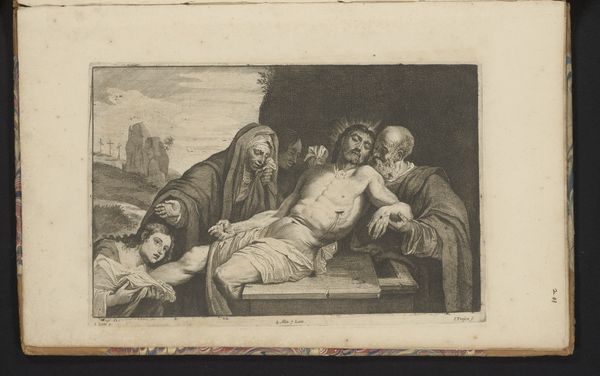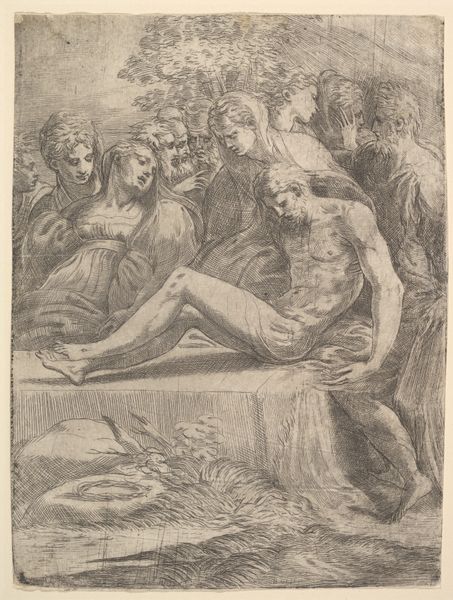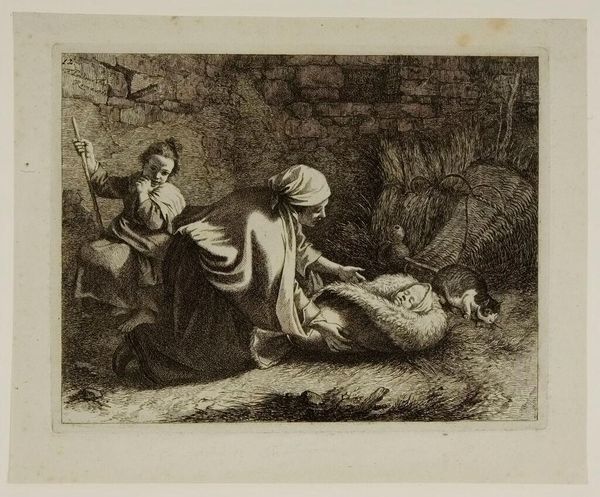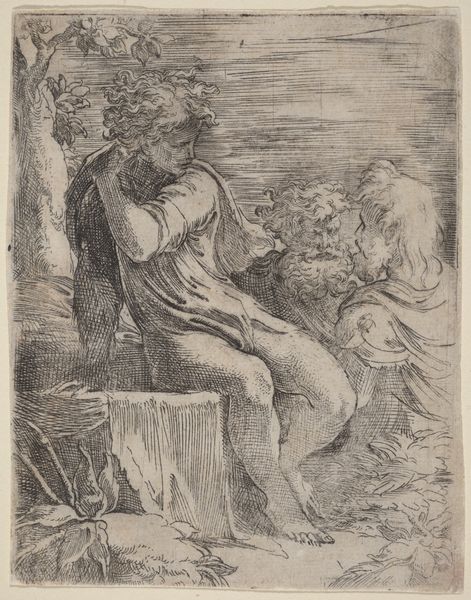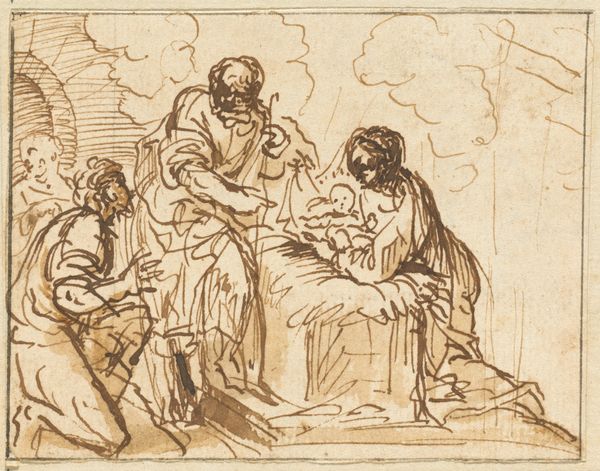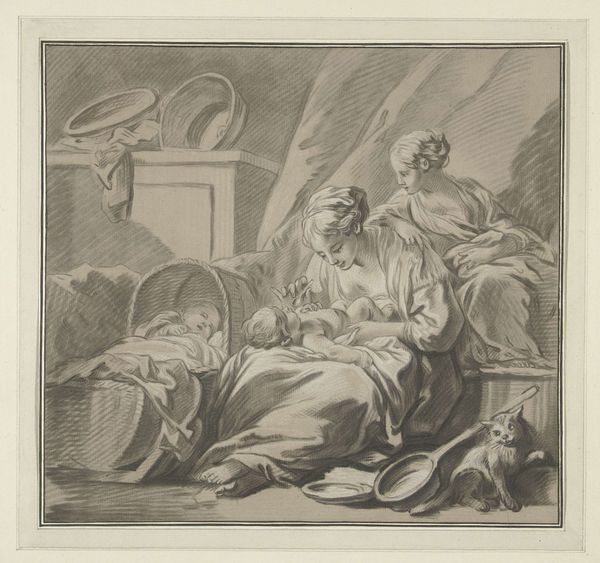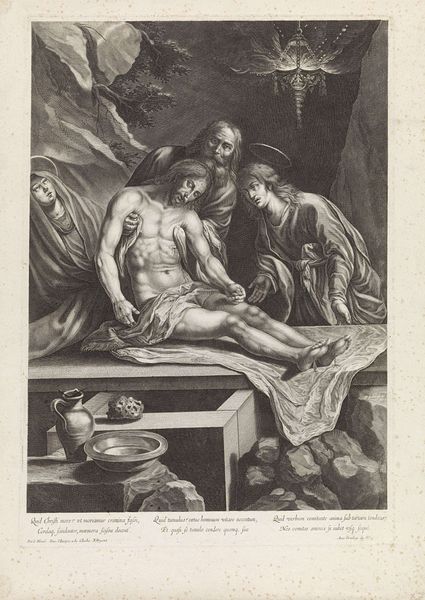
etching
#
neoclassicism
#
etching
#
dog
#
landscape
#
etching
#
genre-painting
Dimensions: height 234 mm, width 294 mm
Copyright: Rijks Museum: Open Domain
Curator: This etching by Martin Ferdinand Quadal, completed in 1793, presents a rather intriguing tableau titled "Swan, Dog, and Boy by a Fountain." The print offers a snapshot into a specific social reality. Editor: Yes, "intriguing" is one word. The overall tone is quite unsettling. The textures in the etching suggest a tactile engagement with a potentially brutal interaction – a power dynamic, perhaps? The boy looks unnervingly complacent in the presence of the swan's distress. Curator: The composition establishes an interesting hierarchy of gazes. Notice how Quadal positions the dog, the boy, and the swan—each observing the other, yet within a seemingly self-contained sphere. The fountain looms almost ethereally in the background. The delicate etching work allows for an incredible tonal range. It certainly invites interpretation regarding the relationships between human, animal, and constructed nature. Editor: Consider the implications of etching. It requires planning, acid baths, and painstaking execution. This wasn't some spontaneous sketch but a constructed scene—raising questions about labor, who owns the images produced, and to whom they were accessible back then. It may allude to more than mere domesticity. The fountain as status symbol stands against a brutal encounter. Curator: Indeed. Moreover, the style clearly alludes to Neoclassicism—with the stylized landscape and deliberate posing of the figures—which served a particular class agenda. Quadal uses the crisp lines and formal arrangement to elevate a genre scene to a higher aesthetic plane. Note the contrasts between hard angular strokes near the canine form versus sweeping curves around the boy. These aesthetic techniques emphasize power. Editor: And, critically, access—consider the dissemination of such images at the time through printing technologies. The power here isn’t simply aesthetic, but material—tied to consumption, and cultural norms surrounding who could commission and own such representations. These images are literally manufactured and circulated like goods. Curator: Quite a contrast in our viewing experiences then, based on different lenses through which we see, shall we move on? Editor: By all means.
Comments
No comments
Be the first to comment and join the conversation on the ultimate creative platform.
